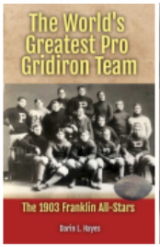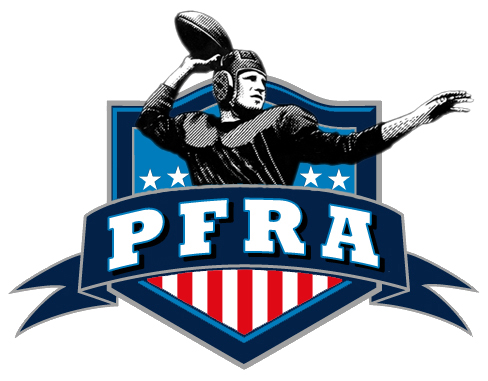Every element of football terminology originated somewhere at some time. Though we can seldom identify the first time a new word was spoken, they often come to public attention when newspaper reporters use the new words to provide insight to readers. — www.footballarchaeology.com
Today's gridiron leaders are often larger-than-life figures, barking orders from the sideline and orchestrating plays with the precision of a maestro. But where did the term "coach" originate in the world of American football? This seemingly innocuous word carries a surprising amount of history, reflecting the evolution of the game itself.
This article delves into the fascinating etymology of "coach" in American football and the research and findings of Timothy P Brown. We'll explore a historical account, searching for the first documented instance of this term being used to describe the leader on the field. Was it a deliberate choice, or did the term evolve organically from earlier terminology?
Perhaps it originated as a metaphor, reflecting the idea of the leader guiding the team like a coachman steers a carriage. Or maybe it emerged from the early days of the game, where sideline strategists quite literally "coached" players on the finer points of the sport.
Join us as we unearth the origin story of "coach" in American football. This exploration isn't just about a word; it's a journey through the changing role of leadership on the gridiron, a window into the early days of the sport where strategy and inspiration first coalesced into the iconic figure we know today. So, buckle up and get ready to discover the surprising origin of a term as fundamental to football as the pigskin itself.
-
The First Football Coach with Timothy Brown
Hello, my football friends. This is Darin Hayes of PigskinDispatch.com. Welcome once again to the Pig Pen, your portal to positive football history. And once again, it's Tuesday, and we're going to stare back into that portal of the history of football and talk with our friend Tim Brown of FootballArcheology.com. And he also has many great books on football history.
Tim Brown, welcome back to the Pig Pen. Hey, Darin, I appreciate it. Thank you once again.
I always look forward to doing these each week. Yeah, I do, too. And I've been really looking forward to discussing this one because you had one in late August, a tidbit on the first football coach.
And I'm hoping that you'll share some of the information from that great tidbit with our listeners. Yeah. So, one of the things I've been doing lately is basically writing a book that covers the origins of football terminology.
So when did somebody, when was somebody first called an assistant coach or a defensive coordinator or an offense coordinator or whatever? When did the word handoff come into the game? All kinds of things like that. So, it's just regular terminology that every fan understands. So, one of the words that every fan understands is a football coach.
So I'm going back and most of what I'm doing is I'm searching on online newspaper archives because my rationale is that when it shows up in a newspaper, that means it's being introduced to the general public or it's already known to somebody, but it's getting out of the football technical terminology world. Because it's going to be in a mass publication. So, I'm using that as the database.
And so I went and searched and looked for an example, the earliest example I could find, a football coach. That ended up being a guy named Alfred Holden, who was mentioned as the football coach at Harvard in 1889. And so that in and of itself is kind of interesting.
I mean, I think it's fascinating, but just two other elements of it that I think are kind of interesting. It is just that a football coach in 1889 was not at all like what we think of as a football coach today. So back then, I mean, now a football coach is a full-time job; he's 57 years old or whatever. So this is, it's an experienced, supposedly adult, human being who probably played, but one way or another has gone through years of apprenticeship as an assistant coach and analyst and whatever.
But back then, the only guys who knew how to play football were guys who just stopped playing football. So, recent college graduates were the ones who were most knowledgeable about football. One of the traditions that a lot of Eastern schools developed was that the captain from the previous year would return and help the captain for the next year.
Other alumni would come back, and that's part of the reason they used to have alumni games. But the alums would come back and scrimmage with the players. That's one of the reasons football coaches used to wear gear in practice; they were scrimmaging with the kids.
And so he came back, and he continued coming back for another decade or two, because I found references saying that he came back in 1899, so ten years later, a lot of 28 other guys, other Harvard alums who came back to coach a week or two during pre-season, but guys would pop in and help out. So the thing was that the captain ruled the roost. Schools would have a football association, typically alums who raised money or maybe handled the money, but the on-the-field decisions, everything was ruled by the captain.
And so even like Walter Kemp, even though he's credited with coaching and a lot of other guys are credited with coaching in the 1880s, 90s, and even the first decade, a lot of times they answered to the captain. The captain made the final decisions. And coaches couldn't coach during the games, coaches couldn't coach.
They had the coaching from the sideline rules, which is a penalty. And even as late as 1915, the Yale captain fired the coach halfway through the season. So that's kind of a different world.
So, the other thing that I am kind of interested in is the origins of the word coach. So that comes from, you know, we still call a horse-drawn carriage, certain horse-drawn carriages, coaches. And, you know, that was, I'm not sure exactly where that term itself came from, but it referred to, you know, horse-drawn vehicles that carried people from one place to another.
So the students at Oxford in England, who liked to create all kinds of slang terms, they then took the term coach and applied that to a tutor who carried a student through a semester and got them to pass their tests. So, the coach became kind of a tutor. And then, it started being applied to athletic coaches in England and then crossed the water.
And so the first baseball coach in a newspaper was 1888. And then first football coach is 1889. So.
Wow. I never realized, I always thought they were, you know, two separate words, but spelled the same and pronounced the same, you know, I didn't realize that they were once the same word and it was a derivative of the other. So very interesting.
Yeah. Yeah. So, I mean, I think those, those kinds of, you know, where slang moves in to become just, you know, you don't even think about it, you know, well, who thinks about where the word coach came from? Well, I do, but, you know.
Right. Well, Hey, now you got us thinking about it. So, thanks for that.
Now you'll come back to the way the captains are, you know, I know from my officiating days, captains, even through my football career, the quarter century that I did it; it seemed captains sorta had less and less importance in decision-making. And now they almost want to encourage the referee to be within earshot of the offended coach. When you're explaining things to the captain, you know, coin tosses are now the coin toss you see out on the field. Maybe not NFL games, but most college and high school games are ceremonious.
They're most of those are done in the locker room or long before the game started, whether you know that or not, it's a little official secret, but that's last 20 years or so that's been going on. So the coaches are right there telling the captains what, you know, decision to make and everything. So, you know, it's more focused because the coaches have their jobs on the line.
You know, it's them; their livelihood is at stake, whether they win or lose that game where the kid is making a decision, he makes a wrong decision. Okay. He just gets yelled at by the coach, and he goes on his merry way.
Well, the coach might lose his job over this. I think we're at some point where that's coming from, but it's interesting that the captains were in full control back a hundred years ago. Yeah.
Well, you know, if you're, if you're old enough, you'll recall the days when quarterbacks called the plays, right? I mean, there were still pro-quarter NFL quarterbacks calling the plays. Yeah.
Probably into the maybe early eighties, something along those lines. And now, of course, you know, I mean, they had audible or automatics back then as well, but you know, now you kind of serve some of the same function, you know, via audibles, but you know, that whole coaching from the sideline, that was a penalty coach, you know, so the whole ethos was that the game is about the kids. The game is about the players on the field, not some stodgy old coach or last year's captain.
It's, you know, you're gone, you're, you graduated. So, you know, it was all about the focus and the decision-making, and the pressure should be on the kids because then they could learn something. And so, you know, that, that was kind of the rationale behind all of that, but, you know, well into, you know, well, well into the sixth, well, the early sixties is when coaching from the sideline pretty much was limited, you know, in college football, you know, and that's when you start seeing players shuttling in and out, you know, pros, pros did it a little bit earlier, but yeah, I mean, it's just very different, it was a different world, you know, before, before coaches could, could coach.
Now, there are earpieces in the quarterback's helmet and defensive captain's helmet, and they're getting direct from the press box. Yeah, yeah. And that's, you know, I mean, and the funny thing is, I mean, there were people who were just adamant.
Red Blake was one who just thought it was a horrible trend to allow coaches to increasingly call plays and send in what they said were messenger guards, you know. And, you know, but obviously, you know, he lost that battle. And I think it's a good thing he did because it really improved the game and the communication.
Let, let the athletes play, let the coaches do the thinking, because that's what they get paid for. And it makes it a much more interesting game. That's for sure.
Yeah. I mean, obviously, it's a far more technical game, you know. But, you know, there's, I think there's still something to be said for at lower levels about letting the kids call the play.
But, you know, I mean, I coached youth football too. And so, you know, I call the plays. So I get it, you know.
Yeah. Awesome. Definitely some interesting stuff.
Now you said you have the book in the process, though. I believe you have, where people can see bits and pieces of your book on your site. Would you like to talk about that at all? Yeah.
So I'm, I'm releasing, you know, kind of little bits of it here and there about once a week; I release one of them. So part, some of them I'm sending out are open to everybody, and then others are for paid subscribers only. But if you go to the site, you'll see a little header up at the top that says a word on football, which is the working title of the book. Click on that and, you know, read whatever is in there.
Or again, if you're, if you're subscribing, then you already are getting those things. But, you know, I'm, I'm still defining a couple more terms, but I'm pretty close to being done. And now, you know, what I got to do is I've written all these things, the separate pieces.
Now I got to kind of get them all to fit together and make sure I'm not repeating myself 57 times. And so it'll be you know, my only goal really is to have it done, you know, at least by mid November. Just so what I found in the past is that if you're, if you're selling books, you better be selling them in November and December because that's when they sell baby.
That's for sure. Wow. That is great.
So Tim, why don't you remind us once again, the, where your website is and any social media where people can find you? Yeah. So the website is footballarchaeology.com and I go by the same name on, on Twitter. So those are the two places and, you know, whichever way you prefer to consume, do it that way.
But, you know, the one thing that's nice about subscribing is if you subscribe, you're sure to get every, every one of the posts, you know, and you read them at your leisure. So, okay. And if you miss that listeners, we have it in the show notes, get you linked right to Tim and you can be on your way to getting the tidbits and the words on football and that he gets released there too, if you're so interested.
So Tim, thank you very much once again, for sharing this great bit of gridiron history with us and appreciate it and hope to talk to you again next week. Okay. Very good.
Look forward to it.
Transcribed by TurboScribe.ai.










